Peripatus, or “velvet worms”, are creatures reminiscent of the formidable sandworms from Frank Herbert’s science fiction novel-turned-film, Dune.
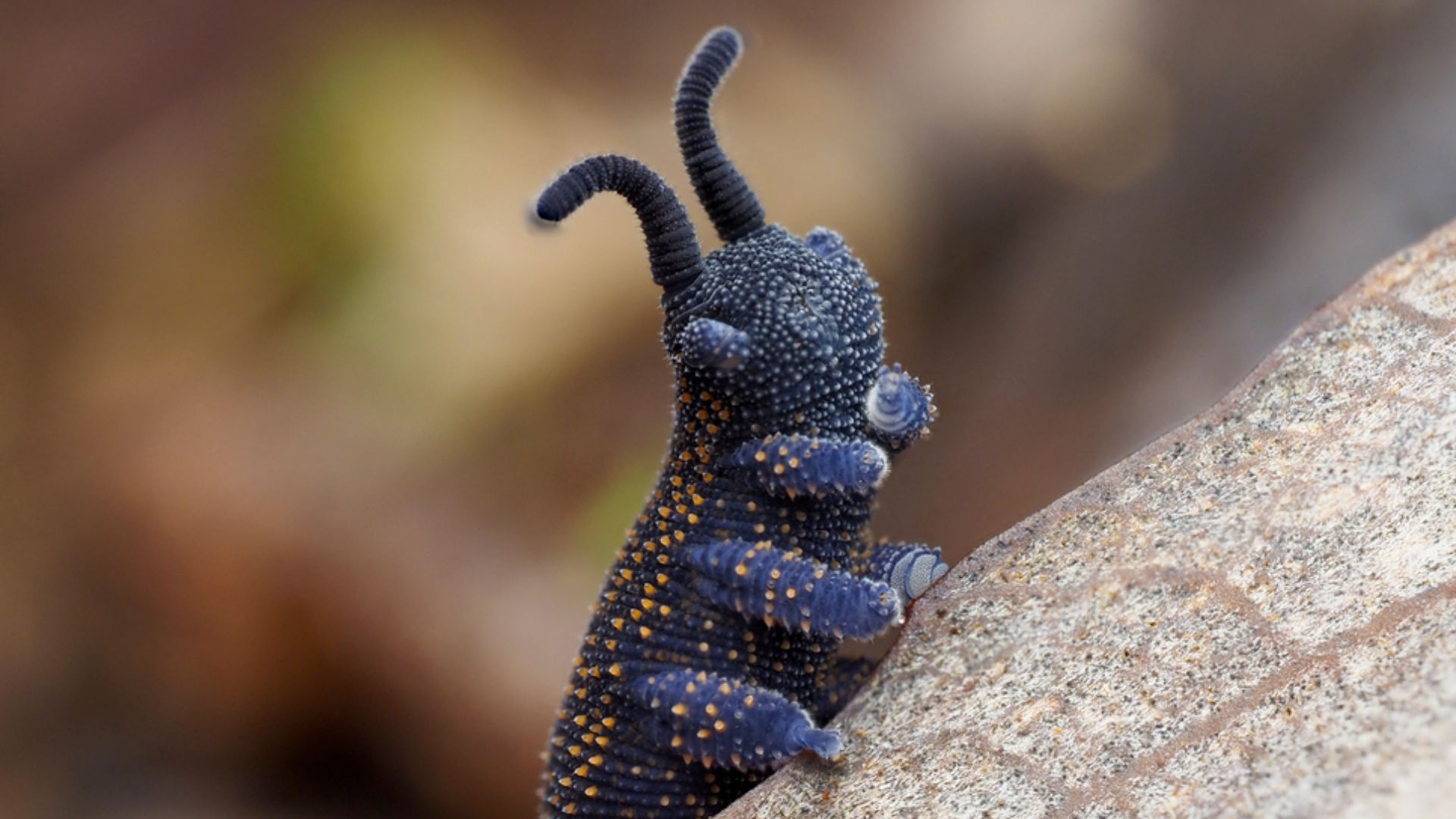
These ancient and alien-like creatures are enthralling. Here are some reasons why.
- They capture prey by shooting them with a jet of sticky fluid
- Their saliva then dissolves the prey into a nutritious ‘soup’
- Females can give birth months or even years after mating
- Females have two uteri so can be carrying embryos at different stages of development at the same time – a sort of double pregnancy with two sets of different-aged offspring.
- Members of the same species may be very different from each other – they might not even have the same number of legs.
- They’re usually solitary, but sometimes thousands will gather together in the same rotting log.
Ngaokeoke (peripatus), sometimes called velvet worms are stumpy-legged invertebrates that look like caterpillars and live on the forest floor. Unlike leaf-munching caterpillars however, ngaokeoke are sharp-shooting predators who capture their prey by shooting them with a jet of sticky fluid.
Also, unlike caterpillars, peripatus don’t metamorphose into moths or butterflies. In fact, they’re neither insect or ‘worm’, but instead, peripatus are a sort of something in between.
Peripatus were once referred to as a ‘missing link’ as they were thought to connect the heritage of segmented, legless invertebrates (such as worms) and the jointed-legged arthropods (such as insects). They’ve got structural characteristics of both.
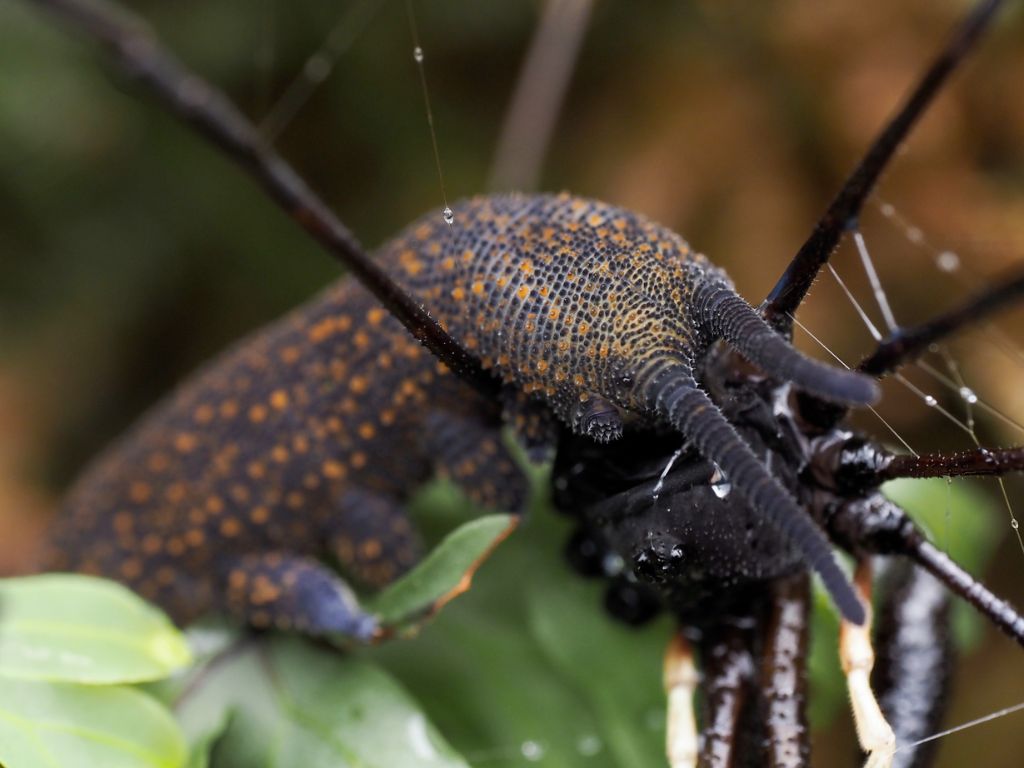
Worm-like features include a thin cuticle rather than a hard exoskeleton, unstriated muscles, numerous unsegmented legs, a simple excretory system and the lack of a distinct head. Insectlike features are a blood circulatory system, dorsal tube-like heart, unbranched tracheal breathing system and the form of the mouthparts.
Not so much a ‘missing link’ as an evolutionary mix-up perhaps?
In fact, peripatus are so different from other invertebrates that they’ve been given their own phylum in the Arthropod evolutionary line – Phylum Onychophora. Scientists reckon these ‘living fossils’ have hardly changed in 500 million years.
They’re also cryptic, reclusive and not well-understood.
So what do we know about these mysterious forest-dwellers?
They’re fairly small, ranging in length from 2 to 8 cm and have anywhere from 13 to 16 pairs of stumpy legs along the length of their body depending on their species. There are at least 9 species in New Zealand – but there may well be 20 to 30 New Zealand species waiting to be described – so if you’ve ever wanted to name your own species, Phylum Onychophora offers a perfect opportunity.
The 9 species that have been described so far are:
- Peripatoides aurorbis
- Peripatoides suteri
- Peripatoides indigo
- Peripatoides sympatrica
- Peripatoides kawakaensis
- Peripatoides morgani
- Peripatoides novaezealandiae
- Ooperipatellus viridimaculatus
- Ooperipatellus nanus
The last two species on the list (genus Ooperipatellus), differ from the others in that they lay eggs rather than bearing live young.
World-wide there are thought to be about 200 species of velvet worms living around the Equator and in the Southern Hemisphere.
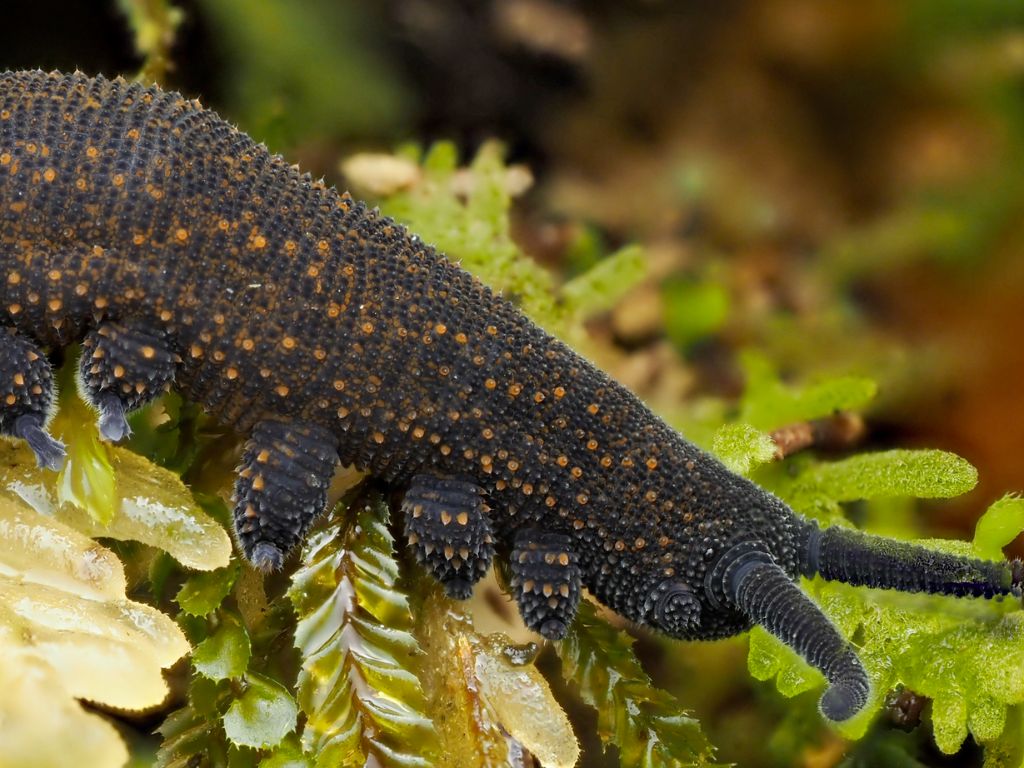
Ngaokeoke are believed to live for about 5 years and the females can produce 10–20 offspring each year. Peripatus need a moist, shady, cool habitat as their velvety skin has permanently open pores and they can easily dry out.
The report also explains why we’re really not that sure how many peripatus species we have. It seems that different species can look very similar – and members of the same species can also look very different from each other. Confusing!
They’re found in most forested parts of New Zealand, as well as in remnant patches, scrub and gardens. Occasionally they’re even found in pasture, alpine and city park sites. During the day they hide deep within rotting logs and under leaves and debris, venturing out at night to prey on other invertebrates, which they catch with jets of sticky fluid.
So that’s the basic bio – now for some more detail on that weirdness. Back in 2012, work began to widen and realign the Caversham stretch of State Highway heading south out of Dunedin and that prompted an in-depth report (LINK) on what’s currently known about New Zealand peripatus. Why? Because the suburb of Caversham has it’s very own peripatus that lives in a forest reserve area just off the side of the motorway where the road works were happening.
Peripatus taxonomy has become confused due to species being defined based on somewhat ambiguous characteristics. For example, skin colour pattern, and the number of leg pairs, jaw denticles and spinous pads can be quite variable between some individuals within a species and yet similar between some species. More recent genetic studies have revealed numerous complexes of cryptic species that visually appear the same. For example, what were thought to be five South African species were found to be 18, one species became four in Brazil and more than 70 previously undescribed species were discovered in Australia. However, even with the aid of genetic techniques, defining species and genera can be an arbitrary decision.”
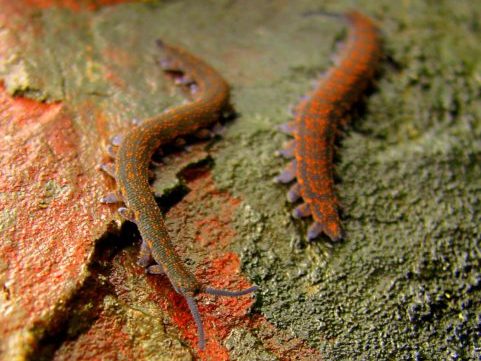
So, although species of peripatus appear very similar physically, they have high genetic diversity.
“Two populations of an Australian species that were separated by less than 10 km were found to have genetic divergence as great as that seen between a bee and a fly. This suggests that the relationship between morphology, genetics and taxonomy for peripatus might not be conventional.”
Peripatus are a remnant species of ancient ‘Gondwana’.
“The current distribution and relationships between the Peripatopsidae can be explained by a common ancestor having been present on Gondwana. The high sea level about 30 mya (million years ago) left very little, if any, of the New Zealand land mass above water. Therefore, it is possible that Onychophora dispersed to New Zealand after this event,” the report’s authors explains:
“The length of time that species have been separated can be estimated from the number of differences in their genes (although this is not always accurate). Based on this, the two genera in New Zealand are thought to have diverged from some Australian and Tasmanian genera c. 75 mya. However, divergence of the New Zealand genus Ooperipatellus from the Australian species O. insignis has been estimated at c. 42 mya. Species radiation within the New Zealand genus Peripatoides may have occurred between 7 and 15 mya (million years ago).”

There is some debate as to quite how unique the Caversham peripatus is (or isn’t) according to the report.
“The Dunedin species is relatively consistent genetically from Outram to Peel Forest and yet, some people consider specimens from Leith and Caversham Valleys to be sufficiently genetically distinct that they belong in a different genus that may have diverged from other lineages c. 95 mya, prior to the separation of Australia and New Zealand. The density of the Caversham Valley peripatus population is higher than is usually found elsewhere in Dunedin or New Zealand. There has also been a bright green form found in beech forest in the Aoraki/Mount Cook – Lake Ohau area.”
The report also identifies some favoured habitat characteristics for the Dunedin peripatus.
“In Dunedin, peripatus presence was also found to be associated with the presence of tree fuchsia (Fuchsia excorticata) and small arachnids (< 2 cm), slightly acidic conditions, an increase in the number, size and degradation of logs, and the relative water content of cover objects, canopy density and air humidity. In an urban landscape, peripatus presence increased with the presence and area to edge ratio of forest, reduced housing density, and increased garden size.”
They’re also not averse to human debris in the right circumstances
“In Caversham Valley, peripatus have been found within stumps and logs of various native and exotic species, and amongst deep leaf litter, bark chips and wood piles. Where tree canopy provides cover and detritus, peripatus have also been found in piles of dumped rubbish, brick and rubble, foam, rubber, plastic, and cracks and crevices of stone walls, quarries, and rocks. They tend to be found in moderate numbers within the forest, but are much more numerous around the more disturbed fringes.”
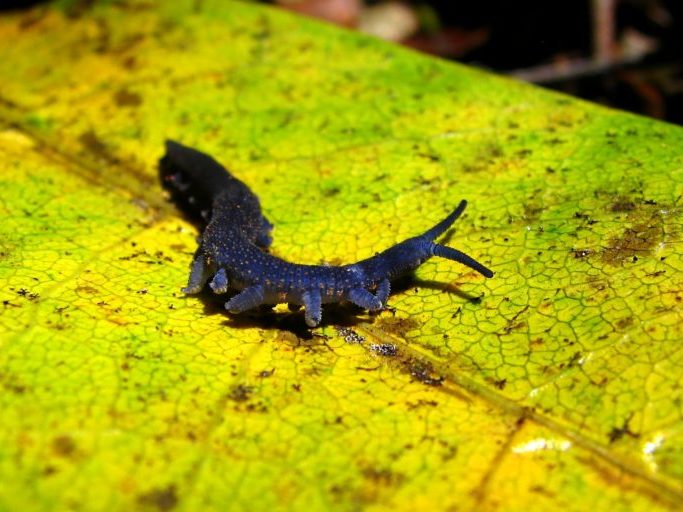
Peripatus have eyes, but rely more on other senses to relate to their environment.
“The eyes are small and sight is poor, so they mostly rely on touch, using their short antennae and sensory spines on the numerous papillae, which project from the cuticle giving it a velvety appearance. Like Arthropods (e.g. insects, spiders, centipedes), peripatus breathe through pores (spiracles) in the skin; however, they are unable to close these. Consequently, they need to inhabit a damp environment but avoid extremely wet habitats where they may drown. Humidity receptors on the body surface mediate movement towards the wet, while receptors on the antennae mediate movement towards the dry; these receptors probably function via water evaporation.”
Peripatus aren’t fast movers either – one more reason to ‘shoot’ their prey rather than chasing them perhaps. Once captured by sticky fluid, digestion of prey is somewhat gruesome.
“Peripatus are relatively cautious, slow moving and nocturnal, emerging from their shelter deep within logs and leaf litter at night to prey on other invertebrates. Their victims are trapped with jets of viscous fluid that are shot from a pair of oral papillae; they are then chewed and injected with saliva before the partially digested juices are sucked out. The fluid is also used to defend individuals from predators, probably making an unpleasant mouthful should attack occur. Some species in Tasmania and South Africa also curl into a tight ball when disturbed, but this has not been reported in New Zealand peripatus.”
Those stumpy little legs and slow movement, mean that peripatus aren’t long-distance travellers. Dispersal in suitable habitat has been estimated at 20 metres per year.
“Females appear to carry out only limited dispersal. Males of an Australian species initially disperse to and colonise new habitat, following which they secrete a pheromone to attract females. This means that females do not need to expend as much energy or take as much risk searching for food and shelter, which may explain why they are often larger and more common than males—although this may also be due to their earlier maturation and longer lifespan. In New Zealand, logs containing single females have been found, however, which suggests that males may not always initiate dispersal.”
While peripatus are usually solitary, that isn’t always the case, especially for Caversham’s peripatus.
“New Zealand peripatus are more commonly found as individuals or occasionally in clusters, but have been observed to form nurseries, shelter in mixed age groups, and hunt and feed in groups in captivity. A notable exception is the Caversham Valley peripatus, which have been recorded in large clusters estimated at up to 2000 individuals, with only scattered individuals in between. These colonies can be of mixed age, but some all-adult and some distinct nursery groups have been found.”
And yes – even their sex life could be described as slightly weird.
“With the exception of one parthenogenic species, peripatus have both males and females. Mating is rarely observed, but males may place packages of sperm (spermatophores) either internally or on the female’s cuticle, from where they are absorbed. Mating probably occurs throughout a female’s life, but sperm can also be stored in spermathecae for several years. Males produce sperm and females store sperm throughout the year.”
“Females have two uteri and can have multiple embryos at different stages developing at the same time. Some species, including those of Ooperipatellus, lay eggs via an ovipositor located between the last pair of legs. Others, like Peripatoides, retain the eggs internally and give birth to live
offspring.”
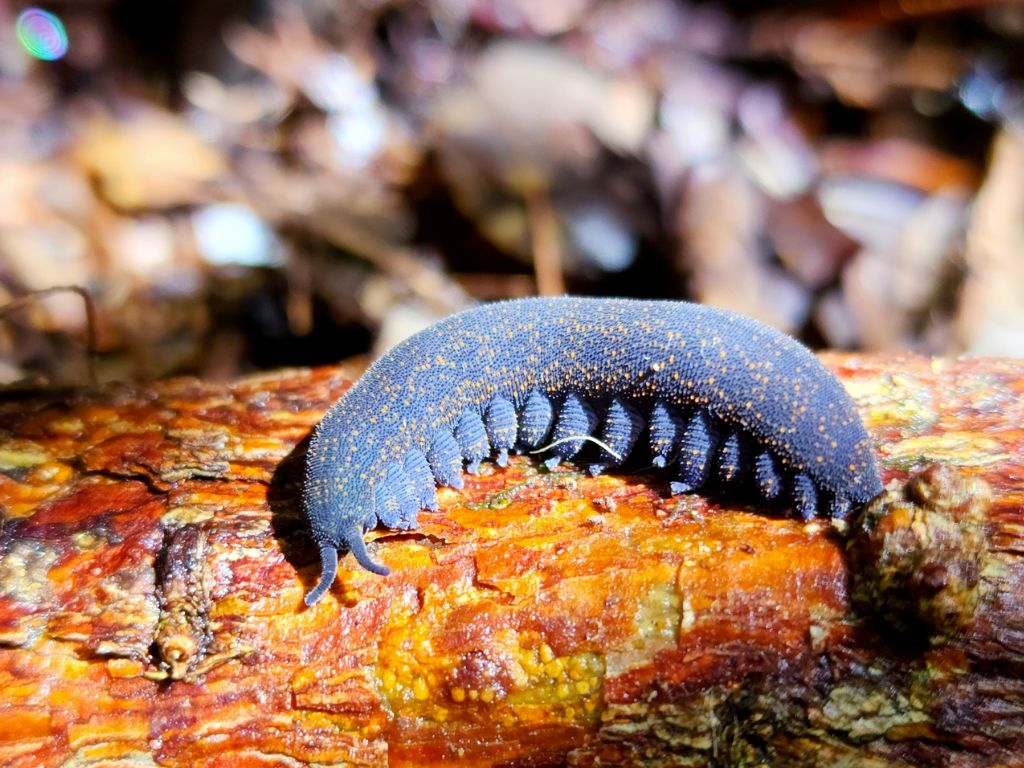
“Members of the P. novaezealandiae group appear to be able to defer release of their embryos or to fertilise eggs using stored sperm and are iteroparous breeders (have offspring repeatedly rather than in one end-of-life event). Gestation is thought to take c. 6 month, while females in captivity in the absence of males gave birth after 24 months. Most females appear to give birth in November to December. The average brood size in P. novaezealandiae was 12 with a maximum of 28.”
Offspring resemble small, white adults and are able to fend for themselves. They moult before birth and then every few weeks throughout life.
Threats to peripatus include habitat loss, predators, collectors and our sheer lack of knowledge about these weird little critters. Any forest on or near your property may be home to peripatus, so there are a few ways you can potentially help. Assume that even if you can’t see them, peripatus may be nearby.
Key ways to help include:
• Protecting forest areas by fencing out stock, and controlling browsing and predatory animal pests and weeds
• Enhancing forest areas by planting local native plants, e.g. tree fuchsia (Fuchsia excorticata)
• Considering the need for corridors, linkages and riparian strips
• Retaining fallen trees, logs and forest floor debris, and avoiding breaking apart old rotten logs
Peripatus require deep leaf litter and logs, which are vulnerable to disturbance or destruction by grazing stock and wild pigs and deer. Logs may need at least 45 years of decay to build large populations of peripatus.
Could peripatus be living somewhere near you? Might a new species be living in your neighbourhood, just waiting to be discovered? Well it does happen, so it pays to keep an eye out. In 2006, 12-year-old Kahn Coleman discovered peripatus in a patch of bush near Wimbledon in the Tararua district. He then worked with the landowner to have the land protected with a QEII covenant.
There’s much more to be learnt about our peripatus species, but studying them isn’t easy for several reasons and can also be detrimental to the organisms themselves, as the ‘Peripatus Report’ explains.
“It is notoriously difficult to survey peripatus populations. Marking individuals for monitoring does not seem possible as the skin is shed (and eaten) every few weeks. Searching generally involves focusing on likely locations that contain their preferred habitat and then turning over and breaking apart rotting logs. However, this not only disturbs individuals, but can also destroy their habitat. Even careful inspection appears to alter the microhabitat such that any individuals present will have relocated upon subsequent inspections. Therefore, monitoring via repeat searches would clearly be unreliable.”
Luring them out of their hiding places doesn’t really work either – they’re generalist predators and tend to have abundant sources of prey, so there’s no obvious way to lure them.
Mysterious and elusive – always.
If you’d like to learn more about peripatus and how to restore and enhance habitat to support them, check out the Peripatus/Ngaokeoke Report for more details. Two key suggestions are to plant tree fuchsias and to leave big old logs to rot where they lie.

